Dealing with testicular cancer is tough, but microdoses of cannabis are formidable in fighting tumors. We examined the research on the beneficial effects of cannabinoids on testicular cancer.
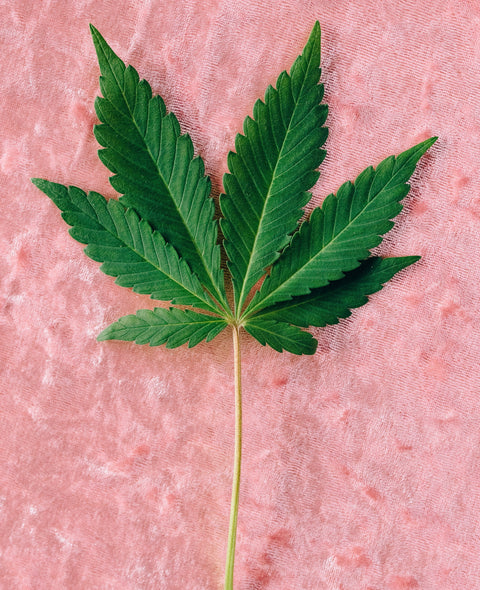
Unlike smoking a joint to get high, microdoses give you all the medical benefits without the intense feelings. We're talking between 2 and 10 milligrams of THC taken regularly. These small doses lightly engage your endocannabinoid system, reduce pain and nausea, and combat cancer without messing with your productivity or focus.
We’re sort of experts on microdosing. That’s why all our edibles are infused with small, precise doses of Delta 9, cannabidiol (CBD), and other cannabis compounds with mighty health benefits.
Check out our finest selection of THC gummies and find out how they can help you fight testicular cancer.
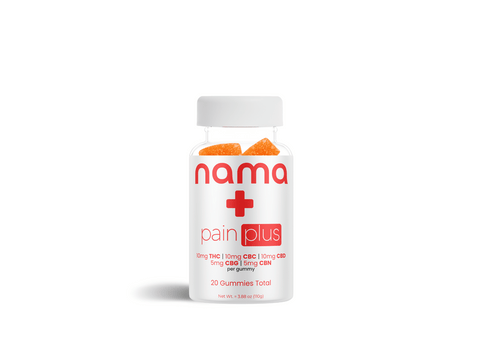
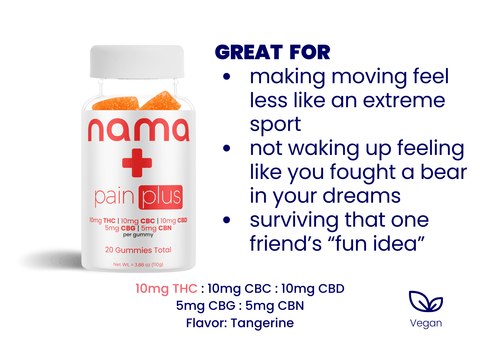
THC: 10 mg | CBC: 10 mg | CBD: 10 mg | CBG: 5 mg | CBN 5mg
What Is Testicular Cancer?
Testicular cancer is a type of cancer that develops in the testicles, the male reproductive glands located within the scrotum. The main job of the testicles is to produce sperm and testosterone, the primary sex hormone in men. Testicular cancer typically happens in one testicle only.
Luckily, testicular cancer is relatively uncommon. Even if it metastasizes (spreads to other parts of the body), it is highly treatable.
Types of Testicular Cancer
According to the National Cancer Institute, there are several types of testicular cancer that are classified by the type of cells in which they develop.
- Gram cell testicular cancer accounts for around 95% of all testicular cancer cases. Gram cells produce sperm. Two main subtypes of gram cell testicular cancer are:
- Seminomas develop from germ cells, a type of cell responsible for sperm production. They typically grow slowly and have a high cure rate, even when they spread beyond the testicles.
- Non-seminomas also begin in germ cells. They grow more quickly and are more likely to spread to other parts of the body.
- Leydig cell tumors are a rare type of testicular cancer that develops from Leydig cells. Leydig cells are specialized cells in the testicles that also produce testosterone. This type of tumor is usually benign (non-cancerous) but can occasionally be malignant (cancerous).
- Sertoli cell tumors are another rare type of tumor of the testicles that originates from Sertoli cells. Sertoli cells are responsible for supporting and nourishing the sperm-producing cells. This type is usually benign.
What Are the Symptoms of Testicular Cancer?
Testicular cancer is easily detectable in the early stages. Here are some symptoms:
- A painless lump or swelling in one of the testicles
- Changes in the shape or texture of the testicles
- Pain or discomfort in the testicle or scrotum
- Aching in the groin area or lower abdomen
- A sudden buildup of fluid in the scrotum
What Causes Testicular Cancer, and Who Is At Risk?
The exact causes of testicular cancer are still unknown. There are some factors that have been linked to a higher risk of developing it in men.
- Men with a history of undescended testicles (cryptorchidism) have a higher risk.
- Testicular cancer primarily affects males between the ages of 15 and 35, but it can occur at any age.
- Having a close relative with testicular cancer increases the risk of developing testicular cancer.
How Is Testicular Cancer Treated?
Testicular cancer typically gets a combination of treatments, depending on the stage, type, and aggressiveness of the cancer.
- Surgery is the primary treatment for testicular cancer. The surgical removal of the affected testicle is called radical orchiectomy. In cases where the cancer has spread to nearby lymph nodes, a retroperitoneal lymph node dissection (RPLND) may be necessary to remove the affected lymph nodes.
- Radiation therapy uses high-energy X-rays or other forms of radiation to target and kill cancer cells.
- Chemotherapy involves administering drugs orally or intravenously to destroy cancer cells throughout the body. This treatment option is typically used for advanced or metastatic testicular cancer.
- Hormone-related treatments involve reducing stimulatory hormones that fuel cancer growth. These include androgen deprivation therapy, hormone replacement therapy (testosterone replacement therapy), estrogen therapy, growth hormone therapy, and thyroid hormone supplements.
These treatment options are fairly effective but usually have some rough side effects. Cannabis microdosing shows promise for thwarting cancer AND softening some of the side effects of other treatments.
Are you new to the practice of microdosing? Read all about the benefits of taking small amounts of cannabis and why this particular ingestion method is gaining popularity.
Why Is Low-Dose Cannabis Better Than Higher Doses?
Microdosing is a novel approach to consuming cannabis that promotes health with precision, flexibility, and, most importantly, safety. Many of our edibles contain Delta-9-tetrahydrocannabinol (Delta 9 THC), the main psychoactive compound from the cannabis plant. When consumed in higher amounts, Delta 9 can produce a range of psychoactive and psychotropic effects.
- Intense relaxation (being "stoned")
- Sedation
- Impaired coordination
- Altered sensory perception (heightened colors, sounds, and tastes)
- Distorted time perception
- Impaired memory and concentration
- Increased appetite (the "munchies")
- Paranoia and anxiety
- Hallucinations
- Changes in mood
- Increased heart rate
- Red eyes
- Dry mouth and throat (the so-called "cottonmouth")
If you’re inexperienced or have a low tolerance to THC, the chances are you’ll experience these potentially strong side effects, which can ruin cannabis for you. Also, chronic use of higher THC doses may have a negative effect on your cognitive function and mental health.
At low doses, you shouldn’t experience unwanted side effects, making microdosing the perfect approach to exploring the potential health benefits of cannabinoids. Here's the deal on why low doses of cannabis are better for your overall health:
- Consistent small doses help you experience the effects of cannabinoids to the fullest, without feeling overwhelmed. You get the medical benefits without psychoactivity or impairment. Microdoses let you function normally, be productive, and feel great.
- Taking cannabis orally allows slow, sustained absorption. Inhalation has fast but fleeting effects, but with edibles, the effects can last up to eight hours (for some people).
- Lower doses tend to energize and enhance focus, rather than sedate and cloud thinking. This way, you avoid brain fog and keep your gray cells juiced up and protected. (Small amounts of THC and CBD can even promote neurogenesis and improve your cognitive performance.)
- There are fewer respiratory risks associated with chewing low-dose gummies compared to smoking. More CBD and terpenes versus pure high-THC flower or extracts—plus the rich fruity flavors to enhance your cannabis experience. (At nama, we use only real fruit to infuse our gummies with, so you never have to worry about artificial flavors or other chemicals.)
- And who says you have to chew your edibles? We introduce our THC drinks with only 2 mg of THC (per full dropper). They are perfect for infusing your favorite beverages with a bit of euphoria and lots of benefits. Create your own unique cannabis-infused concoctions with our low-dose liquid THC drops to suit your taste and mood.
- Edibles are the easiest and most discreet way to consume cannabis. There’s no smoke involved, and there are no strong odors. You can munch on weed gummies anywhere, anytime, without drawing attention.
The only downside to eating our gummies is that your friends may want you to share. And share you can! Shop our Euphoria THC bundles and spread the joy with each bite. Only 10 milligrams of THC and 10 milligrams of CBD per gummy provide a balanced and delightful experience for you and your friends to savor together.
How Does Cannabis Help Treat Cancer?
In a 2022 systematic review, Hinz and Ramer looked into the anticancer properties of cannabis.
- In preclinical studies, THC and CBD have demonstrated potential for inhibiting tumor growth and metastasis. These compounds might act synergistically with traditional chemotherapeutic agents, enhancing their effects.
- THC and CBD could possibly work as anti-metastatic and pro-apoptotic agents in cancer therapy. They could also potentially support the immune system in its fight against tumors.
- The endocannabinoid system (ECS) could play an important role in tumor defense, making it a promising target for anticancer interventions.
In a 2015 study, cannabis was found to inhibit cancer cell angiogenesis (the formation of new blood vessels), which is vital for cancer’s propagation. “Cannabinoids likewise modulate the release of factors from tumor cells that subsequently suppress the chemoattraction of vessel cells thereby conferring antiangiogenesis.”
In order to combat testicular and other types of cancer, cannabis works through something called the endocannabinoid system (ECS). We’ve mentioned this term a few times, but now it’s time to explain what it is and why it’s so important for cancer treatments.
What Is the Role of the ECS in Cancer Treatment?
The endocannabinoid system is a complex network of signals and receptors that are responsible for a wide range of bodily functions. According to Lerner, et. al., the ECS “serves pivotal roles in a diverse range of physiological and pathophysiological states, including behavior, pain, schizophrenia, obesity, Alzheimer disease, multiple sclerosis and cardiovascular disease.”
While our bodies naturally produce endocannabinoids, phytocannabinoids found in plants like cannabis interact with our ECS in the same way. They bind to the endocannabinoid receptors and influence important biochemical changes in the body. By targeting the ECS, cannabinoids seem to slow tumor growth while promoting cancer cell apoptosis and autophagy.
Delta 9 has a similar structure to the endocannabinoids and binds strongly to cannabinoid receptors, specifically CB1 and CB2 receptors. This binding triggers cellular responses that produce diverse effects in the body.
When taken at sufficient doses, Delta 9’s interaction with CB1 receptors produces the “high” traditionally associated with THC. When it binds to CB2 receptors, THC produces powerful anti-inflammatory effects.
Unlike its psychoactive cousin, CBD doesn’t make you high. CBD does not bind to cannabinoid receptors directly. Instead, it downregulates their function when THC is present in the system.
CBD has little binding affinity for either CB1 or CB2 receptors, but it is capable of antagonizing them in the presence of THC. In fact, CBD behaves as a non-competitive negative allosteric modulator of CB1 receptor, and it reduces the efficacy and potency of THC and [anandamide]. (Vučković, et. al.)
CBD and THC may be two distinct compounds from the cannabis plant with different impacts on the ECS, but when it comes to treating cancer, THC and CBD show similar medicinal effects. While both cannabinoids have strong therapeutic potential on their own, it is their combination that seems to produce the best results.
Remember how CBD indirectly impacts cannabinoid receptors? Here’s what Vučković, et. al. have to say about the synergistic interaction, called the entourage effect, between CBD and THC.
It has been demonstrated that cannabidiol can act synergistically with THC and contribute to the analgesic effect of medicinal-based cannabis extract. At the same time, CBD displays an entourage effect (the mechanism by which non-psychoactive compounds present in cannabis modulate the overall effects of the plant), and is capable of improving tolerability and perhaps also the safety of THC by reducing the likelihood of psychoactive effects and antagonizing several other adverse effects of THC (sedation, tachycardia, and anxiety).
You don’t think the entourage effect is a real thing? Evidence is piling up that it exists.
While on the topic of evidence, let’s look into the available research on using cannabis for testicular cancer.
Product QUIZ
Need help deciding what product is best for you? Take our quiz, just three questions until your perfect match!
Can Cannabis Treat Testicular Cancer?
Research into the effects of cannabis on testicular cancer is still in its early stages. Studies have shown that cannabinoids like THC, CBD, Delta 8 THC, and cannabinol (CBN) have potential anti-tumor effects: they inhibit tumor growth and induce apoptosis in cancer cells, but large-scale clinical trials focusing specifically on cannabis and testicular cancer are limited.
Further research is needed to fully understand the therapeutic potential of cannabis, despite the plethora of available studies that show cannabis can in fact help fight other types of cancer.
A 2021 systematic review concluded that there’s a “lack of high-level evidence and robust methodology of the studies” that limit the evaluation of the relationship between cannabis and testicular cancer.
Some support existed for using cannabis for cancer pain and chemotherapy-induced nausea. There was inadequate evidence to substantiate cannabis use as a therapeutic agent for management of [urological cancers].
Based on what we know about the mechanisms behind its potent antitumor properties, cannabis may be able to treat testicular cancer by:
- Lowering inflammation. THC, CBD, CBN, and other cannabinoids have demonstrated formidable anti-inflammatory effects that could help reduce inflammation associated with cancer growth. (Read more about the way CBD lowers inflammation in the body.)
- Modulating our immune system. Through the endocannabinoid system, cannabis compounds can modulate the immune system and potentially enhance our bodies’ ability to fight cancer cells.
- Inducing cancer cell apoptosis. Back in 2005, researchers found that a synthetic cannabinoid reduced the amount of phosphorylated BAD protein. Phosphorylation of BAD has been linked to cancer cell survival pathways and drug resistance. According to them, “the increase of proapoptotic Bad activity is an important link between the inhibition of survival pathways and an onset of execution phase of cannabinoid-induced glioma cell death.”
- Inhibiting cancer cell angiogenesis. We already mentioned the 2015 study by Hinz and Ramer, in which they explain the anti-angiogenesis properties of cannabis. Angiogenesis is important for tumor growth, as tumor cells need a constant supply of fresh oxygen and nutrients in order to survive and spread. By inhibiting the formation of new blood cells, cannabis can weaken the tumor and slow down its progression.
- Altering the gene expression of cancer cells (the way they produce their genes). This makes them less aggressive and less likely to spread. A 2022 study found that CBD alone has a cytotoxic and pro-apoptotic effect on cancer cells. It lowered the resistance of cancer cells to treatment and changed their morphological characteristics in order to hinder their growth.
- Inhibiting cancer cell proliferation. A study on melanoma demonstrated how equal amounts of THC and CBD decreased tumor growth and inhibited the proliferation of skin cancer cells while, at the same time, increased autophagy and apoptosis of cancer cells in vivo.
Despite the lack of conclusive evidence for using cannabis to treat testicular cancer, many men often resort to taking up cannabis to relieve either cancer symptoms or chemotherapy-related side effects.
In fact, we think men and women equally shop our products in search of wellness and joy. And, boy, do they get what they need. Take Cory, for example. He’s digging our Energy gummies with low amounts of THC and CBD because they give him “all the feels without any ‘high’ feelings.”
Can Cannabis Help With Chemotherapy-Related Side Effects?
Chemotherapy is often associated with distressing side effects that can have a substantial negative impact on a patient's quality of life. Cannabis may be able to help alleviate chemotherapy-related side effects.
“Patients with cancer used MC products as multipurpose symptom management and as cancer-directed therapy, sometimes in lieu of standard-of-care treatments.” (Braun, et. al.)
Braun et al. looked at how patients with cancer used medical cannabis (MC) and the kind of healthcare oversight they received for it. The results showed that, while patients didn't get much advice from their regular doctors on whether or how to use medical cannabis, they still chose to use cannabis for medical care, both to manage symptoms and as a potential effective treatment for cancer, sometimes instead of conventional treatments.
A 2022 review of cannabis in palliative care suggested that “positive treatment effects have been reported for some medical cannabis products in the palliative care setting,” but that further evidence is needed to support its use in clinical practice.
Positive treatment effects (statistical significance with P < 0.05) were seen for some [cannabis] products in pain, nausea and vomiting, appetite, sleep, fatigue, chemosensory perception and paraneoplastic night sweats in patients with cancer…
Another study found that a good number of cancer patients are using cannabis to help cope with their symptoms.
Among users, reasons for use included difficulty sleeping (48%); stress, anxiety, or depression (46%); and pain (42%). Among respondents who used cannabis to improve symptoms, 70-90% reported improvement. (Salz, et. al.)
Cannabis may provide relief from:
- Nausea and vomiting. THC is known for its antiemetic properties: it can alleviate chemotherapy-induced nausea and vomiting, making cancer treatments more tolerable.
- Loss of appetite and wasting. Cannabis can stimulate appetite, addressing the weight loss and malnutrition often experienced by men undergoing testicular cancer treatments.
- Stress and anxiety. Cancer is a distressing disease, and treatment can often cause even more distress, leading to poor mental health. Low doses of THC and CBD can help reduce anxiety and stress.
- Cancer-related pain. This helps improve the quality of life for testicular cancer patients. Read more about the extraordinary analgesic properties of cannabis.
- Insomnia and sleep disturbances. Some cancer patients find that cannabis helps with sleep disturbances, promoting better rest during treatment.
Before considering cannabis-based medicine as a part of cancer treatment, consult with a healthcare provider to ensure it doesn't interfere with the effectiveness of conventional treatment for testicular cancer.
Or even better: show your healthcare provider our collection of the best hemp-derived Delta 9 edibles. These phenomenal gummies are proof that quality ingredients and exceptional flavors go hand in hand. Try our low-dose Bliss gummies, with only 5 mg of THC and CBD, and spice things up with the most soothing honeydew-infused gummies.
Even your doctor can’t say no to these blissfully-low doses.
Can Cannabis Cause Testicular Cancer?
There is some speculation that cannabis use may actually cause testicular cancer. There’s little evidence for this, and certainly not at low doses.
We’ve examined the research, and here’s what we’ve discovered:
- One hypothesis for the potential correlation is that cannabis may have hormonal effects at high doses. Cannabis use can lead to changes in hormone levels, including a decrease in testosterone, which could theoretically impact the risk of testicular cancer.
- A 2011 study studied a group of nearly 50,000 Swedish men in the late 1960s and early 1970s. While the researchers did find a potential link between heavy cannabis use and testicular cancer incidence, the study suggested that using cannabis occasionally and in lower doses did not increase the risk of the disease.
- According to Gurney, et. al., there seems to be a link between chronic cannabis use and the risk of developing testicular germ cell tumors, especially non-seminomas. However, this study highlights the need for further research to confirm these results and better understand the link.
- A 2019 study found similar weak evidence. Researchers looked at 25 studies on different types of cancer: lung cancer, head and neck cancer, oral cancer, and testicular cancer. They found that the link between marijuana use and these cancers wasn’t strong. It wasn’t clear whether regular use of medical marijuana causes any type of cancer or if marijuana levels or frequency of use matter.
- There are many confounding factors at play, such as tobacco use, alcohol consumption, and genetic predispositions, which can complicate studies attempting to establish a direct link between cannabis use and testicular cancer development.
As the study on Swedish men revealed, low-dose consumption of cannabis doesn’t increase the risk of developing testicular or any other type of cancer. Microdosing has virtually no negative effects for the majority of people and seems to promote health and aid in fighting cancer.
Dealing with testicular cancer is stressful enough without worrying if your cannabis use is making things worse. That's why our Relax Plus gummies use carefully calibrated microdoses of THC and CBD for relief without risk.
Each tasty watermelon gummy contains just 5 mg of THC and 25 mg of CBD, which is not nearly enough to cause cellular harm. Their relaxing terpene blend enhances the soothing effects of low-dose cannabinoids.
What Are the Best Edibles to Alleviate Cancer Symptoms?
Here’s a list of our top products for kicking testicular cancer’s butt.
- An equal ratio of CBD to THC can do wonders for chronic pain management. Euphoria gummies are another obvious choice when it comes to alleviating pain and getting rid of the nasty side effects of chemotherapy.
- Our Bliss gummies also contain an equal CBD to THC ratio, albeit in lower concentrations. Bursting with honeydew melon flavor, these vegan edibles are designed to bliss out your evenings without breaking a sweat.
- Energy gummies contain not only 2.5 mg of THC and 5 mg of CBD but also L-theanine. L-theanine is a phyto-amino acid that promotes relaxation and sleep. In combination with the entourage effect produced by low doses of THC and CBD, L-theanine and our delightful Energy gummies can calm your nerves and reduce your anxiety without making you feel drowsy or heavily sedated.
- Sleep Plus gummies can help patients with cancer deal with insomnia and sleep apnea. 25 mg of CBD and 2 mg of THC work together to promote a healthy 8-hour-sleep every night. This unique blend of terpene-rich hemp extracts is backed by 3mg of melatonin, another sleep-promoting nutrient.
- If you prefer sipping on your cannabis, meet our liquid Buzz drops. These THC and CBD-infused drops allow you to experience the ultimate bliss and cancer-kicking relief in every sip of your favorite beverage. They contain ultra low doses of THC (only 2.2 milligrams per full dropper), so you won’t feel any of those intense feelings—just a blissful canna-experience.
Where to Buy the Best Cannabis Edibles
If you’re looking to buy the best cannabis edibles, remember that quality matters a lot. Some low-grade THC gummies may contain nasty stuff like pesticides, heavy metals, and other contaminants that can negate the health benefits of cannabis. You'll want to source your edibles from reputable sellers that provide lab testing results and use top shelf ingredients, like nama.
Be a savvy shopper and order at nama CBD. We’re transparent about the ingredients we put in our products—which are nothing short of top quality—and we use only organic, non-GMO, American sourced hemp with no artificial colorings or flavors.
Take a look at our guide to where you can purchase the best cannabis edibles that are 100% organic, legal, and delicious.
Testicular Cancer FAQ
THC has potential benefits for women with breast cancer. Research indicates that THC may act on cannabinoid receptors in human breast cancer cells, inhibiting cell growth and inducing cancer cell death.
The psychoactive side of THC is often a reason why many people choose cannabis products without THC. If you’re one of them, we recommend our broad spectrum CBD gummies. They contain balanced ratios of CBD, cannabinol (CBN), and other cannabis compounds and terpenes that can help you achieve your wellness goal any day of the week.
But don’t be afraid to explore low-dose THC products. While higher doses of THC may have unwanted side effects, microdoses are perfectly safe for your body and mind. That’s why full spectrum CBD products are way better because of the synergistic effects of CBD and THC.
Shop our full spectrum edibles and never worry about psychoactivity.
Don’t forget that the use of cannabis as a primary or alternative therapy for breast cancer is not currently supported by clinical guidelines. Conventional cancer treatments such as surgery, chemotherapy, radiation therapy, and targeted therapies remain the standard of care.
Smoking is a known risk factor for various types of cancer, including lung, mouth, throat, and esophageal cancer. Smoking forces harmful substances into the body, such as carcinogens, which can damage DNA and increase the risk of cancer development. For people already diagnosed with cancer, smoking can worsen their condition in several ways:
- Smoking can interfere with the effectiveness of cancer treatments such as chemotherapy and radiation therapy, making them less effective in controlling or eliminating cancer cells.
- Smokers with cancer are at a higher risk of developing complications, including infections, slower wound healing, and poor cardiovascular health. All of this can impact the overall outcome of their treatment.
- Smokers with cancer tend to have lower survival rates and a higher risk of cancer recurrence compared to non-smokers.
Given these consequences, the best course of action is to quit smoking, either cigarettes or cannabis. Haven’t you heard of much better ways to get your daily dose of THC?
With our THC edibles, you never have to worry about carcinogens or infections. Microdosing cannabis through precisely calibrated edibles is a far safer route. Our products contain measured doses of THC and CBD for therapeutic effects without impairment. Just 2–5 mg of THC per serving provides health benefits without smoking-related harms.
Try our Bliss gummies with 5 mg of THC and CBD in each gummy and be prepared to be blown away.
As per current scientific understanding, there is no credible evidence to suggest that CBD promotes tumor growth. In fact, some studies have explored the potential anti-cancer properties of CBD in laboratory and animal models.
The effects of cannabinoids like CBD are different for every cancer patient. They depend on the specific type of cancer, the stage of the disease, and individual factors like tolerance levels and weight.
In general, CBD is detectable in urine for up to three days after use, but this duration may be longer for heavy and frequent users.
The duration for which CBD remains in your system is different for every person. It varies depending on:
- Dosage
- Frequency of use
- Metabolism
- Weight
There are several testicular cancer treatments that involve hormones.
- Androgen deprivation therapy uses medications to suppress androgens like testosterone, which can fuel testicular cancer growth. This includes luteinizing hormone-releasing hormone (LHRH) agonists and antagonists.
- Corticosteroids are drugs like prednisone that may be used alongside chemotherapy to help prevent or lessen nausea, fatigue, and other side effects.
- Testosterone replacement therapy is used to increase levels of testosterone because androgen deprivation reduces testosterone levels. Testosterone replacement may be given after cancer treatment to help manage symptoms of low testosterone.
- Estrogen therapy may be used for recurrent testicular cancer when cancer becomes resistant to androgen deprivation. Estrogen works similarly to lower androgen levels.
- Thyroid hormone supplements can treat symptoms of hypothyroidism. Thyroid hormones typically decline due to androgen deprivation.
- Growth hormone therapy is used if hormone production by the pituitary gland is impaired due to tumor spread or treatments near the brain.
- Bisphosphonates are bone-strengthening drugs that can help prevent osteopor
There is no evidence to suggest that being transgender increases the risk of developing testicular cancer. Transgender individuals, including transmasculine people, who have undergone hormone replacement therapy (HRT) or gender-affirming surgeries may have different health considerations.
Testicular cancer is most common in individuals with male anatomy, but the risk factors for testicular cancer are primarily related to genetics, undescended testicles, and other factors rather than gender identity or hormone therapy.
Regardless of gender identity, regular health check-ups and physical examinations are important for everyone's well-being.
THC pills, often known as dronabinol, are a synthetic form of Delta 9 THC. Dronabinol is sometimes prescribed to cancer patients to help manage specific symptoms associated with cancer and its treatments, including nausea and vomiting, appetite stimulation, and pain management.
Dronabinol is typically prescribed when other medical treatments have not been effective in managing these symptoms. These pills are different from recreational drugs like pure cannabis, and are regulated by the Food and Drug Administration (FDA).
Top Sellers
New? Start with our Ultimate Sampler!

THC: 10 mg | CBC: 10 mg | CBD: 10 mg | CBG: 5 mg | CBN 5mg
Resources
Systematic review of the potential role of cannabinoids as antiproliferative agents for urological cancers - PubMed. (2017, April 1). PubMed. https://doi.org/10.5489/cuaj.4371
Hinz, B., & Ramer, R. (2022, March 11). Cannabinoids as anticancer drugs: current status of preclinical research - British Journal of Cancer. Nature. https://doi.org/10.1038/s41416-022-01727-4
New Insights into Antimetastatic and Antiangiogenic Effects of Cannabinoids. (2014, December 18). ScienceDirect. https://doi.org/10.1016/bs.ircmb.2014.10.005
Lerner, R., Lutz, B., & Bindila, L. (2013, September 19). Tricks and Tracks in the Identification and Quantification of Endocannabinoids. ELS. https://doi.org/10.1002/9780470015902.a0023407
Vučković, S., Srebro, D., Vujović, K. S., Vučetić, E., & Prostran, M. (2018, October 15). Cannabinoids and Pain: New Insights From Old Molecules. Frontiers. https://doi.org/10.3389/fphar.2018.01259
Use of cannabis in urological cancer patients: A review to evaluate risk for cancer development, therapeutic use, and symptom management - PubMed. (2021, December 1). PubMed. https://doi.org/10.5489/cuaj.7198
Ellert-Miklaszewska, A., Kaminska, B., & Konarska, L. (2005, January). Cannabinoids down-regulate PI3K/Akt and Erk signalling pathways and activate proapoptotic function of Bad protein. Cellular Signalling, 17(1), 25–37. https://doi.org/10.1016/j.cellsig.2004.05.011
Real-Time Monitoring of the Cytotoxic and Antimetastatic Properties of Cannabidiol in Human Oral Squamous Cell Carcinoma Cells Using Electric Cell-Substrate Impedance Sensing - PubMed. (2022, December 13). PubMed. https://doi.org/10.3390/ijms232415842
Exploiting cannabinoid-induced cytotoxic autophagy to drive melanoma cell death - PubMed. (2015, June 1). PubMed. https://doi.org/10.1038/jid.2015.45
Cancer patients’ experiences with medicinal cannabis-related care - PubMed. (2021, January 1). PubMed. https://doi.org/10.1002/cncr.33202
Cannabis in Palliative Care: A Systematic Review of Current Evidence - PubMed. (2022, November 1). PubMed. https://doi.org/10.1016/j.jpainsymman.2022.06.002
Cannabis use among recently treated cancer patients: perceptions and experiences - PubMed. (2023, August 31). PubMed. https://doi.org/10.1007/s00520-023-07994-y
Callaghan, R. C., Allebeck, P., Akre, O., McGlynn, K. A., & Sidorchuk, A. (n.d.). Cannabis use and incidence of testicular cancer: a 42-year follow-up of Swedish men between 1970 and 2011. PubMed Central (PMC). https://doi.org/10.1158/1055-9965.EPI-17-0428
Gurney, J., Shaw, C., Stanley, J., Signal, V., & Sarfati, D. (2015, November 11). Cannabis exposure and risk of testicular cancer: a systematic review and meta-analysis. PubMed Central (PMC). https://doi.org/10.1186/s12885-015-1905-6
Ghasemiesfe, M., Barrow, B., Leonard, S., Keyhani, S., & Korenstein, D. (2020, January 15). Association Between Marijuana Use and Risk of Cancer. Substance Use and Addiction Medicine | JAMA Netw Open | JAMA Netw. https://doi.org/10.1001/jamanetworkopen.2019.16318
nama CBD FDA & Legal Disclaimer
Our products are not intended to diagnose, treat, cure, or prevent any disease. They are not a replacement for prescription medications and have not been evaluated by the U.S. Food and Drug Administration (FDA).
The information provided on this website does not, and is not intended to, constitute legal advice or any statement of the status of any laws. Any information, content, and materials available on this site are for general informational purposes only and are not intended to be relied upon for any purpose.
Readers of this website should contact their attorney to obtain advice with respect to any particular legal matter, including decisions on what products are, or are not, legal to sell, possess, or consume. No reader, user, or browser of this site should act or refrain from acting on the basis of the information on this site without first seeking legal advice from their own counsel in the relevant jurisdiction.
About
Learn
Join us on this journey

© Copyright 2025 nama Products LLC. All Rights Reserved.
†These statements have not been evaluated by the Food and Drug Administration. These products are not intended to diagnose, treat, cure or prevent any disease. All information presented here is not meant as a substitute for or alternative to information from health care practitioners. Please consult your health care professional about potential interactions or other possible complications before using any product.
††The information provided on this website does not, and is not intended to, constitute legal advice or any statements of the status of any laws. Any information, content, and materials available on this site are for general entertainment purposes only, and are not intended to be relied upon for any purpose.

By clicking ‘Yes,’ you agree to our
Terms & Conditions and Privacy Policy
123 John Doe Street
Your Town, YT 12345
Store Hours
Sun: Closed
Mon-Fri: 9:00 - 17:00
Sat: 10:00 - 13:00
What to expect at pickup
Closed
Closing at 5pm
Closing at 5pm
Closing at 5pm
Closing at 5pm
Closing at 5pm
Closing at 1pm

![Euphoria Black Raspberry [10ct]](http://www.namacbd.com/cdn/shop/files/nama_black_raspberry_pouch.png?v=1715285306&width=480)
![Euphoria Black Raspberry [10ct]](http://www.namacbd.com/cdn/shop/files/nama_black_raspberry_nutrition_label.png?v=1715285313&width=480)
![Euphoria Kiwi Raspberry [10ct]](http://www.namacbd.com/cdn/shop/files/nama_kiwi_raspberry_pouch.png?v=1715285056&width=480)
![Euphoria Kiwi Raspberry [10ct]](http://www.namacbd.com/cdn/shop/files/nama_euphoria_kiwiraspberry_nutrition_facts.jpg?v=1715873960&width=480)
![Euphoria Triple Berry [10ct]](http://www.namacbd.com/cdn/shop/files/nama_euphoria_triple_berry_pouch.png?v=1715286095&width=480)
![Euphoria Triple Berry [10ct]](http://www.namacbd.com/cdn/shop/files/nama_euphoria_tripleberry_nutrition_facts.jpg?v=1715873950&width=480)
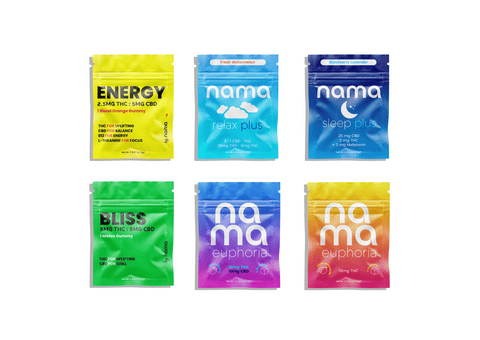
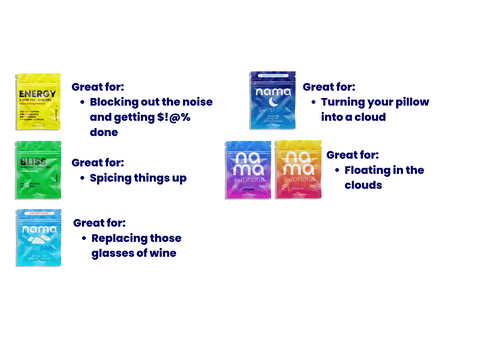
![Buzz Drops™ [THC Drink Drops]](http://www.namacbd.com/cdn/shop/files/nama_thc_buzz_drops.png?v=1711412866&width=480)
![Buzz Drops™ [THC Drink Drops]](http://www.namacbd.com/cdn/shop/files/buzz-drop-wine-comparison.png?v=1736882023&width=480)
![Buzz Packs™ [THC and CBD Powder Drink Mix]](http://www.namacbd.com/cdn/shop/files/nama_buzz_packs_thc_drink_pack_white_background.png?v=1741884660&width=480)
![Buzz Packs™ [THC and CBD Powder Drink Mix]](http://www.namacbd.com/cdn/shop/files/Buzz_Packs_Label.png?v=1741884660&width=480)
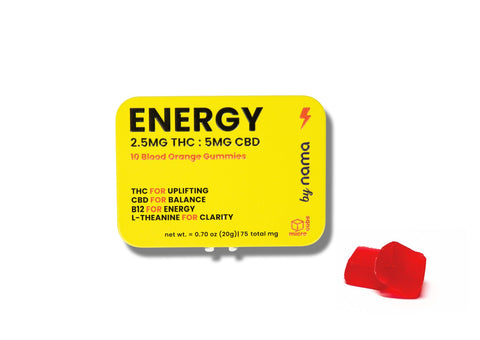
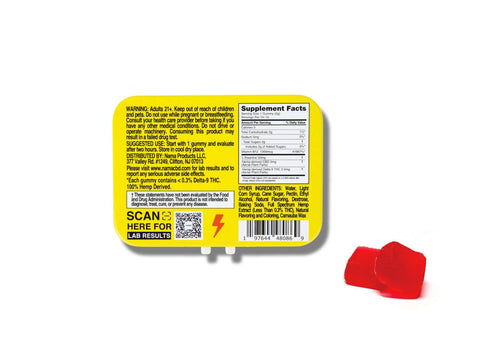
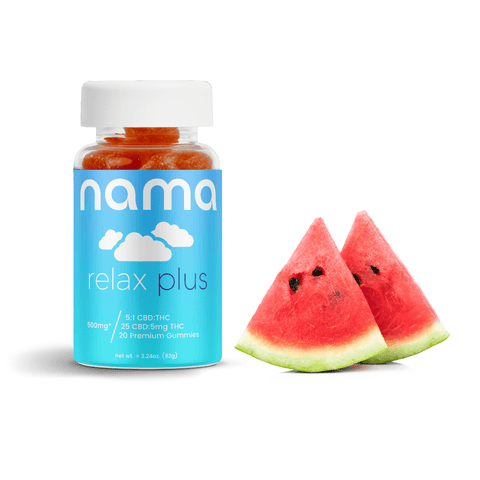
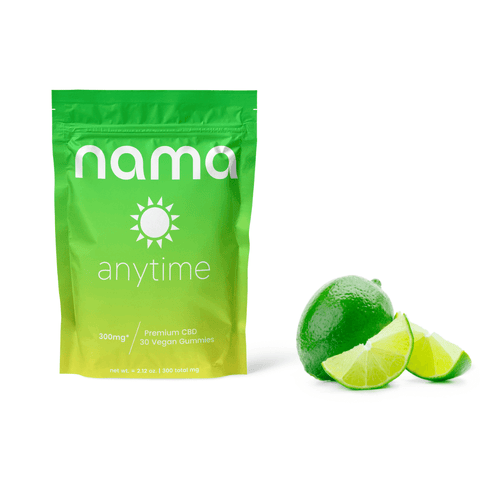
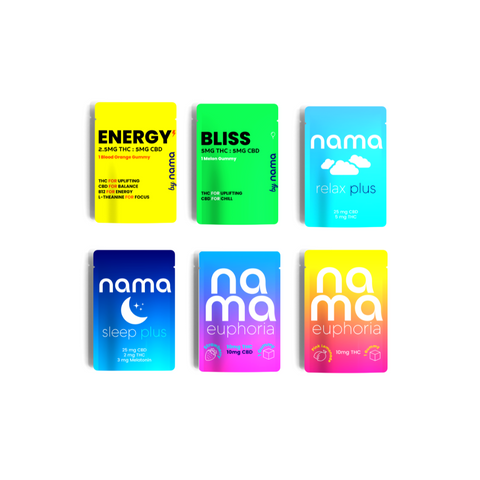
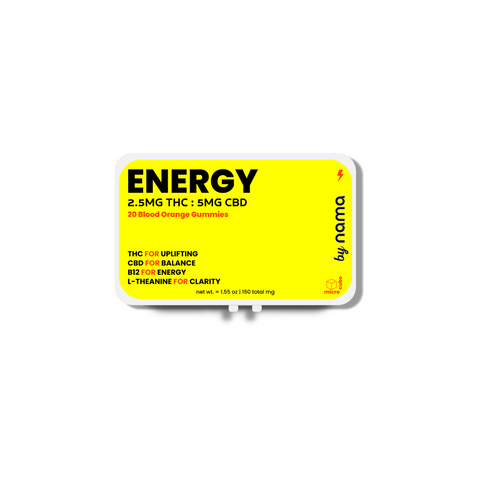

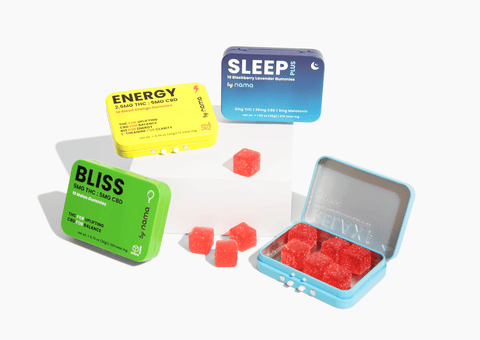
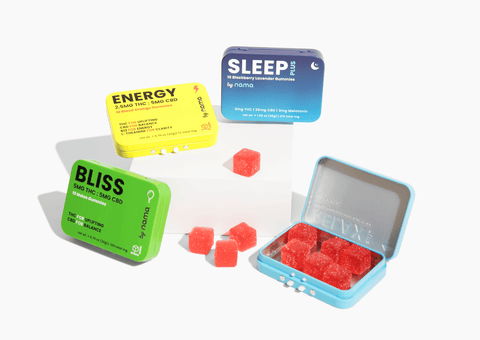
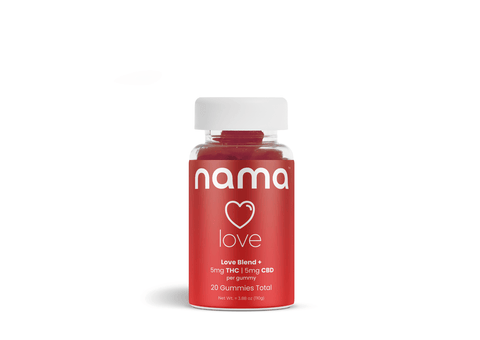
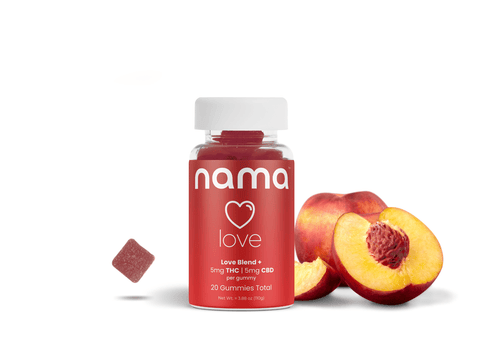
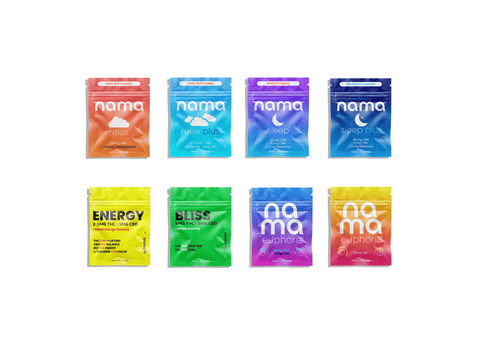

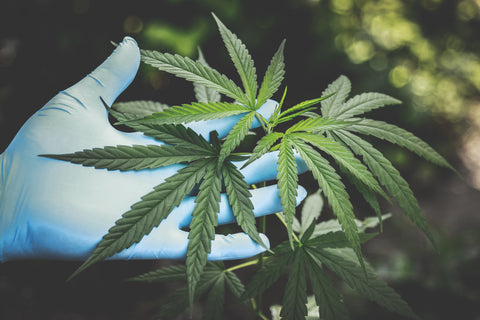
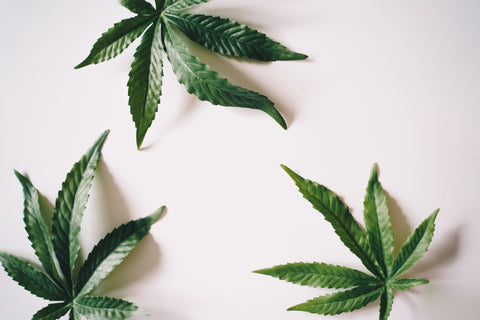

Comments (0)
There are no comments for this article. Be the first one to leave a message!